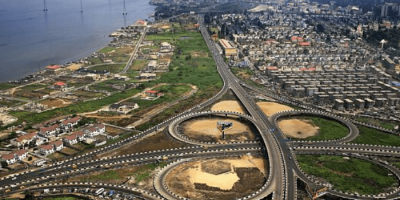Way Out Of Recession Series: Rethinking Infrastructure Development
Posted on Tue 21 Feb 2017
- Download Resource
As the Nigerian Government devises means of lifting the economy out of its deepest recession in a quarter of a century, green shoots are already emerging, triggered by steady, above-the-benchmark oil prices and relative stability in crude oil production in recent weeks. However, the Government’s Economic Recovery and Growth Plan can only be sustainably attained through the diversification of the nation’s major economic base from volatile sources of foreign exchange (“forex”) earnings like oil.
There is a consensus of opinion on the fact that non-oil export based industries would have to be developed in order to buoy the country’s local capacity, productivity and competitiveness. In this direction, the economic low-hanging fruits are manufacturing & engineering, foods & agriculture, solid minerals mining, intellectual property, energy & water resources, education, health, housing, petrochemicals, agro-allied industries, telecommunications & information technology and public transportation.
Whilst it is not in doubt that the country has huge potentials to become a big player in these sectors and that investors (local and foreign) are looking to partner with the government, inadequate infrastructure however poses a great challenge and is acting as a disincentive to private sector investments in these sectors.
It is no surprise therefore, that in a bid to return the country to the path of recovery and growth, the government’s expansionary budget framework in the short to medium term has targeted the financing of substantial infrastructure in the critical sectors of the economy.
In this piece, we advocate more effort from Government at improving the infrastructure development process in Nigeria. In recognition of the need to transition from the old, ineffective era where government was the sole or principal actor in building critical national infrastructure, Government has taken steps towards the adoption of the Public Private Partnership (“PPP”) model for the development of public infrastructure. This is in line with international best practices which now favour robust partnerships between the public and private sectors of the economy through PPP templates that promote the harnessing of private-sector capital, efficiency and expertise for the development of public infrastructure. In essence, this article presents an overview of the Nigeria’s huge infrastructure gap, the available financing mechanisms as well as the massive investment opportunities which are presented to domestic and international investors and argues for a stronger PPP legal and regulatory framework; which will take advantage of these factors to deliver the infrastructure which Nigeria sorely needs.
HIGHLIGHT OF NIGERIA’S INFRASTRUCTURE GAP
-
The FGN in its 2013 “National Integrated Infrastructure Master Plan” projected that the country would need about N398.1 trillion, over the next three decades, for building world class infrastructure that will guarantee sustainable economic growth and development in Nigeria.
-
According to the African Development Bank (“AfDB”), in its 2015 Report titled: “An Infrastructure Action Plan for Nigeria: Closing the Infrastructure Gap and Accelerating Economic Transformation”, a Federal Government of Nigeria (“FGN”) specially commissioned project; the country needs an estimated US$3 trillion in infrastructure investment in the next 30 years (and about US$165 billion in the medium-term) to close its infrastructure gap.













